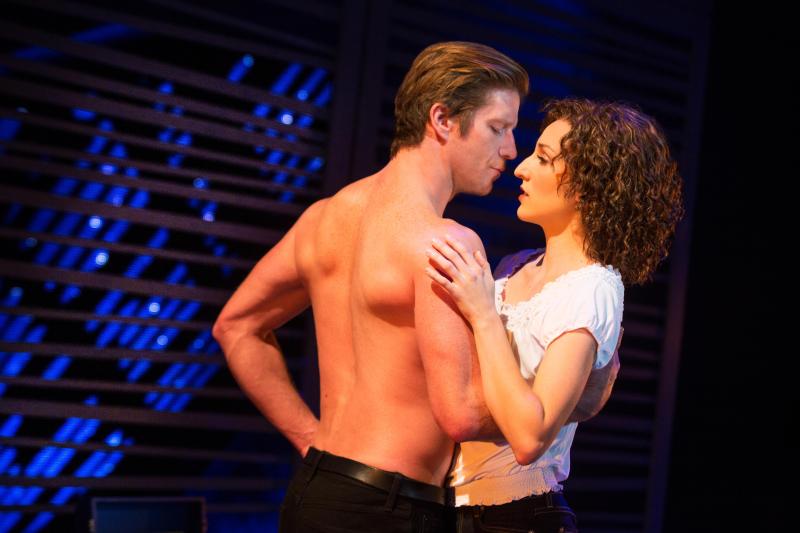From the moment that the lights go down in the Golden Gate Theatre in San Francisco, the cast of SHN’s “Dirty Dancing” creates a dazzling world of dance, tension, and intense, exciting passion. A stage rendition of the iconic 1987 film starring Jennifer Grey and Patrick Swayze, this production wholeheartedly lives up to the energy produced in the movie while maintaining the unique character of a musical.
The plot of the film and musical alike follows Frances “Baby” Houseland (portrayed by a vibrant Rachel Boone), a wealthy and, as her nickname suggests, sheltered young woman who spends a summer with her influential doctor father, mother, and sister at a camp in the Catskill Mountains in New York. However, in classic coming-of-age story fashion, Baby quickly uncovers the more mature, raunchy underside of the camp: the staff quarters, where the only kind of dancing allowed is the foretold “dirty” kind. There, where passions play with tangible heat, she meets the mysterious dancer Johnny Castle (Christopher Tierney) and her innocence gives way to a world of romance and desire of which she never even dreamt.
The first major dance scene in the show features Johnny and his glowing partner Penny Johnson (played by the exceptional dancer Jenny Winton) swirling classically around the ballroom to entertain the guests. Which, of course, makes it all the more impactful when Baby stumbles upon the clandestine party below. This dirty dancing is ten times more spirited, lively, and passionate than the toned-down performance above, full of frenetic movements made all the more sensual by deep red lighting. And, as she stumbles upon it, Boone, with shock and secret delight, easily conveys the nuances of a “good girl” who wants to have a walk on the wild side.
The plot is largely driven by the growing intimacy of Baby and Johnny and the emerging dichotomy between their two distinctive lifestyles — Johnny must work to scrape enough funds to survive, while Baby sits on familial wealth and an easy road ahead of her. When Penny gets pregnant and must drop out of an essential performance, Baby steps up to the challenge of partnering with the fiery Johnny. But with no experience and a fierce naiveté, Baby isn’t the ideal partner, and Johnny must work tirelessly to bring her from novice to pro in a matter of days.
With a plot so heavily sexual and impassioned, the most important ingredient for success is the sexual tension between the two leading actors. As individually talented as they might be, Boone and Tierney immensely lack the chemistry to drive the show to greatness. The characters grow closer as they practice sensual dance moves and discuss their respective pasts, yet Boone and Tierney can’t seem to make the romance believable. This absence makes the flirtatious dialogue and intimacy seem forced, and truly takes away from the heart of the show: the love these two characters find despite the odds against them.
Even so, the world created on stage remains enticing. With the stage set on two levels and the band openly occupying the top, live music adds an immediate energy and presence, creating a whirlwind of sound that sweeps up Baby and the audience alike. To make the world seem even more real, digital images are projected on blank white walls throughout the stage, a technological solution to the problem of adapting film to stage. Visions of sunsets, misty lakes, colossal mountains, and rustic cabins prompt the illusion of being outside, and draw the viewer into a world that theater can’t easily occupy. Most notable is an image of water (accompanied by splashing sound effects) used to recreate the famous scene from the movie in which Johnny teaches Baby how to do leaps and lifts in the lake. With no reasonable way to remake this legendary encounter on stage — they couldn’t exactly drag a lake onto the stage — the set design effectively lures the audience in to make them forget they’re watching a stage show in the first place.
While it suffers from a lack of tangible chemistry between the two lead actors, the passionate cast and constant energy of “Dirty Dancing” creates a production that’s fun and enthralling, reviving the spirit of the nearly 30-year-old film and reforming it on stage.
Contact Madeline MacLeod at [email protected].
